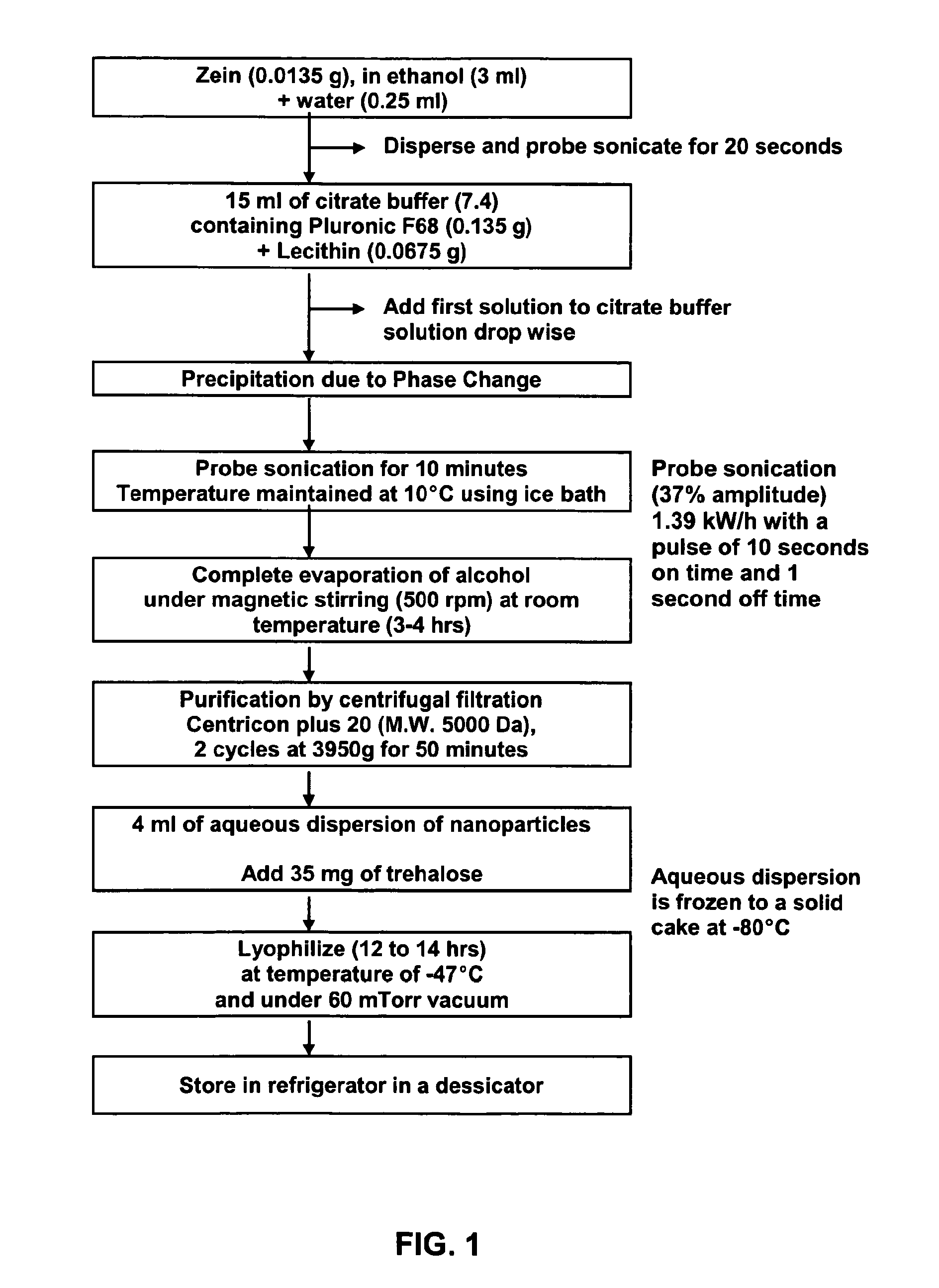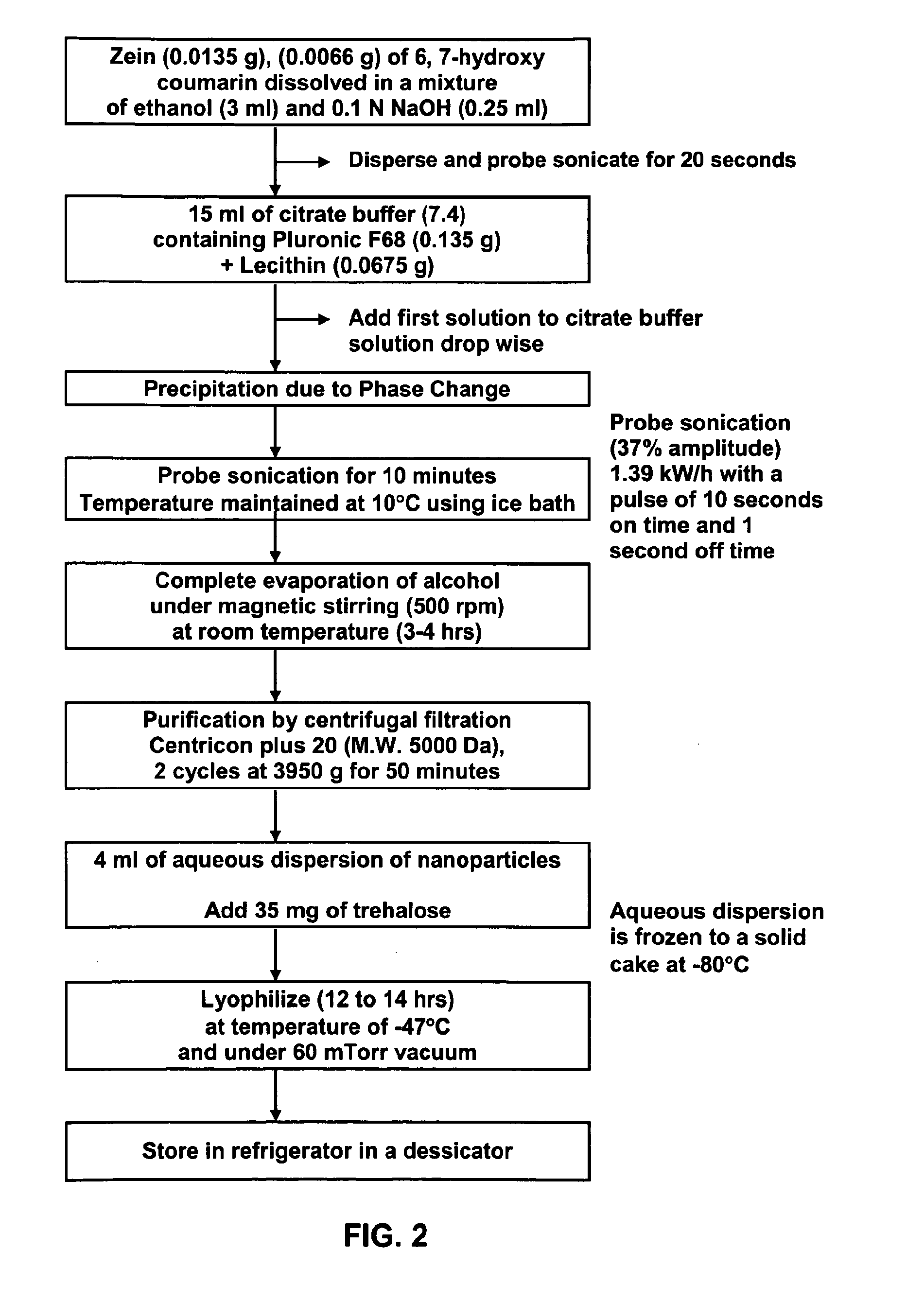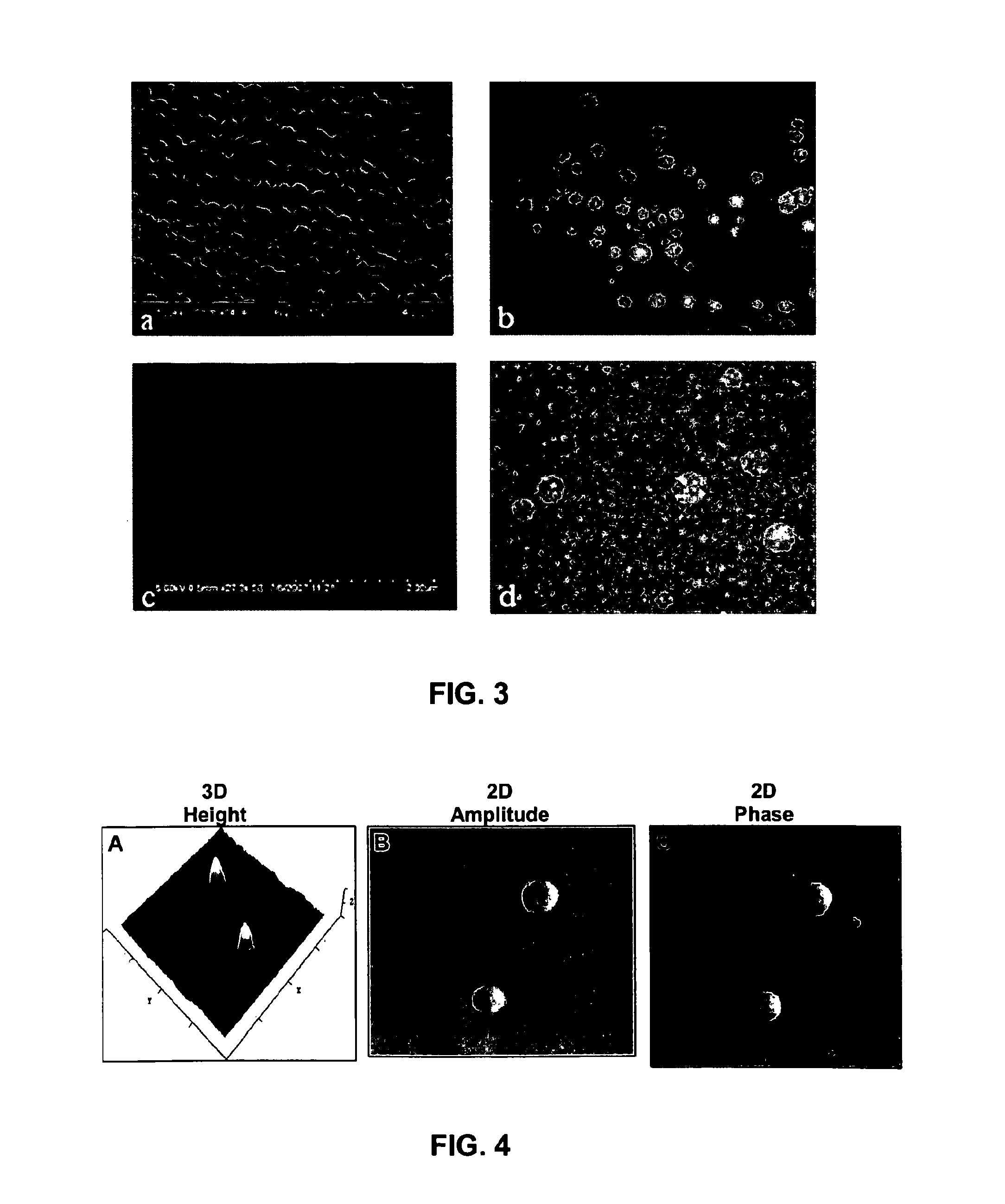Method of forming non-immunogenic hydrophobic protein nanoparticles and uses therefor
a technology of hydrophobic protein and nanoparticles, which is applied in the field of nanoparticle formation methods, can solve the problems of not being suitable as a drug, vaccine or other therapeutic carrier,
- Summary
- Abstract
- Description
- Claims
- Application Information
AI Technical Summary
Benefits of technology
Problems solved by technology
Method used
Image
Examples
example i
[0064]In a first aqueous phase, 0.0135 g of white zein was dissolved in a mixture of 3 ml of ethanol and 0.25 ml of water. The concentration of zein or solvent combination used was optimal; however, nanoparticles in the desired different size range can be produced by modifying the zein concentration or solvent composition. Dissolution of the zein was aided by the application of probe sonication for about 20 seconds. The resulting solution of the first aqueous phase was then added drop-wise into a 15 ml solution of citrate buffer, with a pH 7.4, and a combination of lecithin (0.45% w / v) and Pluronic® F68 (0.9% w / v) under constant application of ultrasonic energy (1.39 kW / h, 37% amplitude) for 10 minutes with a pulse on time of 10 seconds and off time of 1 second. During the ultrasonic shearing process, the dispersion was kept in an ice bath to maintain the temperature at about 10° C. The dispersion was then placed on a magnetic stirrer at between 300 to 500 rpm, at room temperature, ...
example ii
[0066]An amount of 0.65% w / v white zein was dissolved in a mixture of 6 ml of ethanol and 0.50 ml of water. The composition of the resulting solution of the first aqueous phase was altered to obtain a desired pH of about pH 6 to about pH 7. Dissolution of the zein was aided by the application of probe sonication for about 20 seconds. The resulting solution of the first aqueous phase was then added drop-wise into a 30 ml solution of citrate buffer, having a pH 7.4, and a combination of lecithin (0.45% w / v) and Pluronic® F68 (0.9% w / v) under constant application of ultrasonic energy (1.39 kW / h, 37% amplitude) for 2 minutes with a pulse on time of 10 seconds and off time of 1 second. During the ultrasonic shearing process, the dispersion was kept in an ice bath to maintain the temperature at about 10° C. The resulting coarse suspension was then passed through a high pressure homogenizer (Nano Debee®, USA) having an orifice size of between 0.1 and 0.25 mm for five minutes at 20,000 psi....
example iii
[0068]White zein in the amount of 0.0135 g was dissolved in a mixture of 3 ml ethanol and 0.25 ml of 0.01 N NaOH to adjust the pH between 6 and 7. To the solution was added 0.0066 g of 6,7-hydroxy coumarin and the mixture was subjected to probe sonication for 20 seconds to assure dissolution. The resulting solution was added drop-wise into 15 ml of citrate buffer (pH 7.4) containing 0.0675 g of lecithin and 0.135 g of Pluronic® F68 under constant ultrasonic energy at 1.39 kW / h and 37% amplitude for 10 minutes, with a pulse on-time of 10 seconds and an off-time of 1 second. During the sonication process, the solution was kept in an ice bath to maintain the temperature around 10° C. Subsequently, the dispersion was placed on a magnetic stirrer at 300 to 500 r.p.m and at room temperature until the ethanol was completely evaporated. Following complete evaporation of the alcohol, the nanoparticles were purified to remove any excess drug and / or surface active agents. Purification was acco...
PUM
| Property | Measurement | Unit |
|---|---|---|
| pH | aaaaa | aaaaa |
| diameter size | aaaaa | aaaaa |
| size diameter | aaaaa | aaaaa |
Abstract
Description
Claims
Application Information
 Login to View More
Login to View More - R&D
- Intellectual Property
- Life Sciences
- Materials
- Tech Scout
- Unparalleled Data Quality
- Higher Quality Content
- 60% Fewer Hallucinations
Browse by: Latest US Patents, China's latest patents, Technical Efficacy Thesaurus, Application Domain, Technology Topic, Popular Technical Reports.
© 2025 PatSnap. All rights reserved.Legal|Privacy policy|Modern Slavery Act Transparency Statement|Sitemap|About US| Contact US: help@patsnap.com



